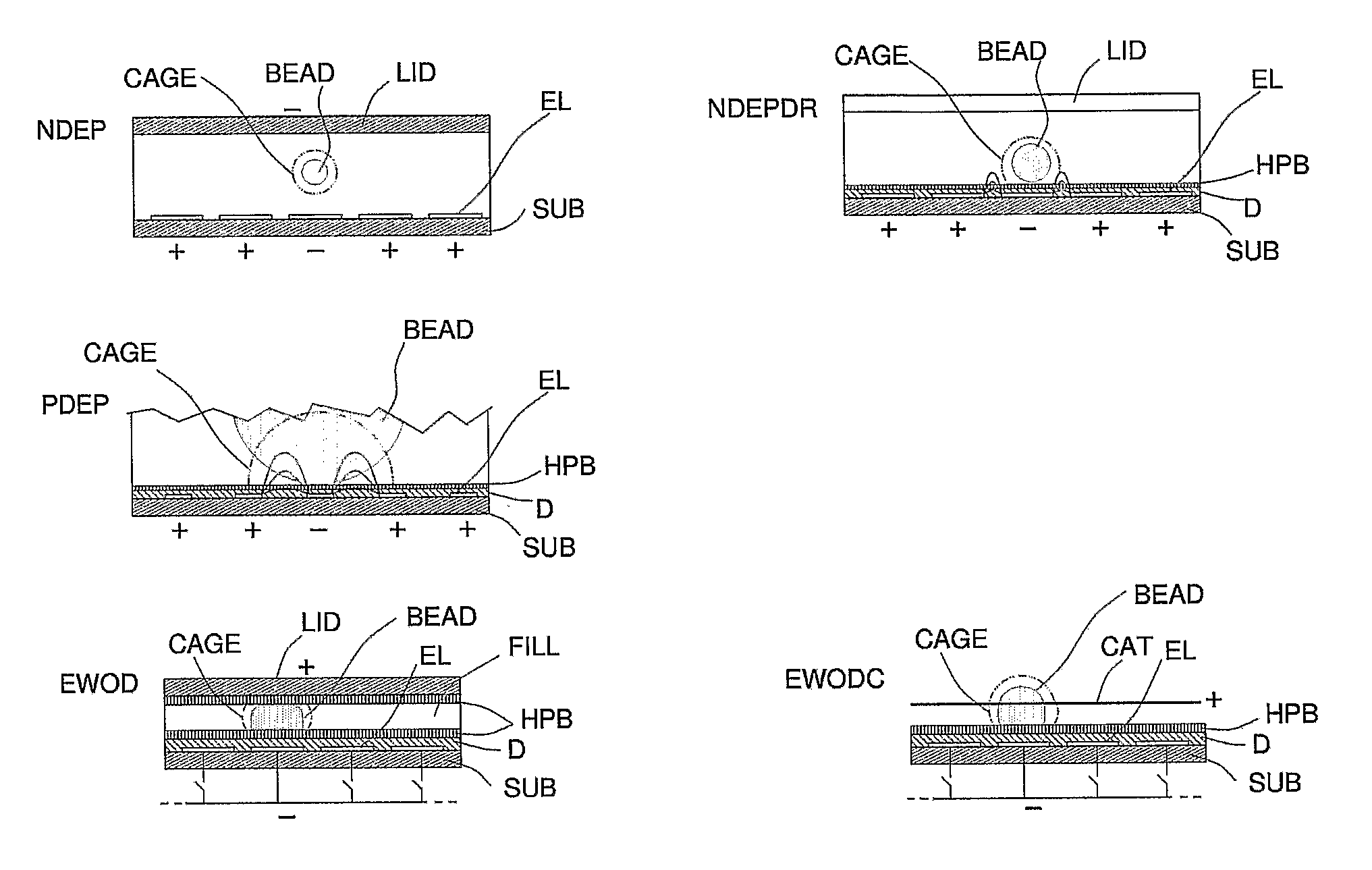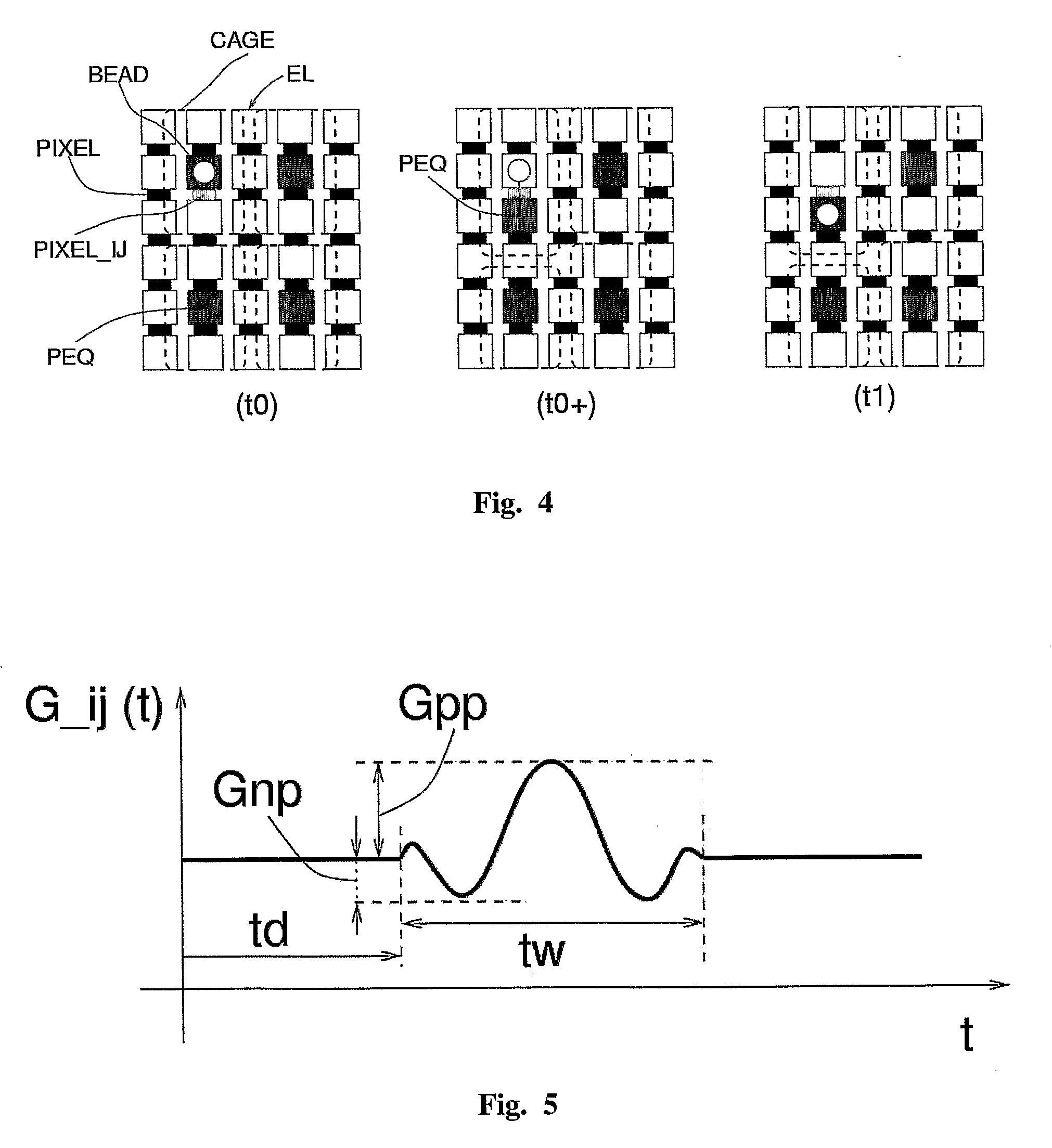Method And Apparatus For Characterizing And Counting Particles, In Particular, Biological Particles
a technology for biological particles and counting methods, applied in the field of methods and apparatus for the characterization and/or the counting of particles, can solve the problems of fixed-pattern noise, limited reliability of the sensors themselves in the detection of cells, and inability to be completely reliabl
- Summary
- Abstract
- Description
- Claims
- Application Information
AI Technical Summary
Benefits of technology
Problems solved by technology
Method used
Image
Examples
Embodiment Construction
[0039]The aim of the present invention is to provide a method and an apparatus for carrying out the manipulation and / or the detection of particles.
[0040]The method of the invention is based on the use of a non uniform force field (F) through which single particles or groups of particles (BEADS) are attracted towards positions of stable equilibrium (CAGE) (FIG. 1). Such field can be for example a negative (NDEP) or a positive (PDEP) dielectrophoresis field (DEP), an electrophoretic field (EF) or an electro-hydrodynamic (EHD) motions field or still electro-wetting on dielectric (EWOD).
[0041]The detection can concern one of the following aspects, or combinations of the same:
1. the counting of single particles or the quantification;
2. the identification and / or characterization;
3. the localization.
[0042]Concerning this, the measurement of the impedance variation and / or the measurement of the luminous intensity variation transmitted, diffused or emitted in fluorescence is mainly exploited...
PUM
| Property | Measurement | Unit |
|---|---|---|
| Fraction | aaaaa | aaaaa |
| Fraction | aaaaa | aaaaa |
| Fraction | aaaaa | aaaaa |
Abstract
Description
Claims
Application Information
 Login to View More
Login to View More - R&D
- Intellectual Property
- Life Sciences
- Materials
- Tech Scout
- Unparalleled Data Quality
- Higher Quality Content
- 60% Fewer Hallucinations
Browse by: Latest US Patents, China's latest patents, Technical Efficacy Thesaurus, Application Domain, Technology Topic, Popular Technical Reports.
© 2025 PatSnap. All rights reserved.Legal|Privacy policy|Modern Slavery Act Transparency Statement|Sitemap|About US| Contact US: help@patsnap.com



